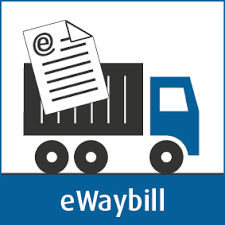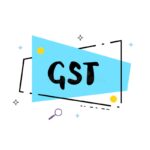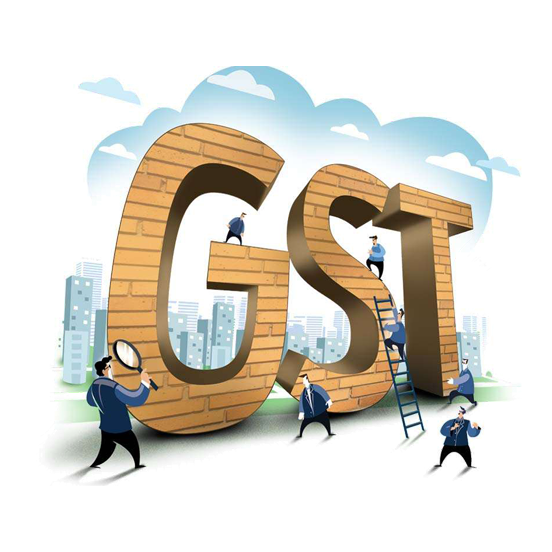- Business Startup
- Startup-Indian Entities
- Startup-Foreign Entities
- Business/Entity Conversion
- Business Registration
- Tax & ROC
- Yearly Tax Compliances
- Income Tax Return Filing
- ITR for Salaried Individuals/ Pensioner
- ITR for Capital Gain
- ITR for Companies
- ITR for House Property Income
- ITR for Income from Business
- ITR for Individuals having Share Trading
- ITR for NRIs and Resident with Foreign Income
- ITR for Partnership Firm/AOP/BOI
- ITR for Presumptive Income
- ITR for Speculation Business
- ITR for Trust, NGO and Companies
- Advisory on Tax Savings
- TDS Return Filings
- LTCG Filing and Advisory
- Income tax Notice Compliance
- Basic
- Standard
- Premium
- ITR for House Property Income and Other Source Income
- ITR for Capital Gain
- ITR for NRIs and Resident with Foreign Income
- ITR for Individuals having Share Trading or Casual Income
- ITR for Speculation Business
- ITR for Income from Business and Profession
- ITR for Presumptive Income
- ITR for Partnership Firm/AOP/BOI
- ITR for Companies
- ITR for Trust, NGO
- Advisory on Tax Savings
Yearly Tax Compliances
ITR for Salaried Individuals/ Pensioner
Income Tax Return Filing
- GST
- GST Registration (₹799)
- GST Accounting
- GST Return Filing
- GST Annual Return
- GST LUT Submission
- GST Taxpayer Registration
- GST Registration for Foreign Entity
- GST Registration Cancellation
- GST-Revocation of Cancellation
- GST Return Filing Packages
- E-way Bill Submission
- Ask an Expert-GST
GST Registration & Cancellation
- IPR
- Trademark
- Trademark Registration (₹5799)*
- Trademark (Individual) Registration
- Trademark with Logo Designers (Individual)
- Trademark with Logo Designers (Company)
- Trademark Objection Management
- Trademark Renewal
- Trademark Renewal (Company)
- MSME Compliance Trademark Registration
- Trademark Restoration
- Trademark Assignment
- Trademark Hearing
- Trademark Opposition
- Trademark Infringement
- Trademark Investigation
- Trademark Logo
- Copyright
- Copyright Registration
- Copyright Objection
- Computer Software Copyright
- Logo Copyright for Goods
- Songs Copyright
- Sound Recording Copyright
- Logo Copyright for Service
- Artistic Work/Painting Copyright
- Cinematography Copyright
- Copyright a Book
- Literature/Dramatic Copyright
- Music Notation Copyright
- Phrase/Slogan Copyright
- Symbol Copyright
- Patent
- Design
Trademark
- Trademark
- Compliance
- LLP Annual Compliance
- Winding up of Inactive LLP
- LLP Winding up by NCLT
Initial Compliance
General LLP Compliance
Changes in company
LLP Annual Compliance/ Closure
- Pay Roll
- Company
- Blog
Goods and Service Tax
GST Filing - GSTR - 1 , 3B (1 Year)
GST Filing - GSTR - 1 , 3B (1 Year)
- Overview
- Points to remember
- Process
GST Filing – GSTR – 1, 3B (All inclusive for 1 year)
Filing GSTR 1, 3B returns for 1 year is now super easy! Opt for this plan and get all filing and compliance needs taken care of!Frequently Asked Questions
Who has to file GST Returns?
In the GST regime, any regular business has to file three monthly returns and one annual return. This amounts to 37 returns in a year. The beauty of the system is that one has to manually enter details of one monthly return – GSTR-1. The other two returns – GSTR 2 & 3 will get auto-populated by deriving information from GSTR-1 filed by you and your vendors.
What is a GST Return?
A return is a document containing details of income which a taxpayer is required to file with the tax administrative authorities. This is used by tax authorities to calculate tax liability. Under GST, a registered dealer has to file GST returns that includes:
• Purchases
• Sales
• Output GST (On sales)
• Input tax credit (GST paid on purchases) Under this plan, our experts will file your GST Returns
What are the types of GST Returns?
There are three types of GST Returns to be filed every month and an annual return for registered businesses as below:
• GSTR-1 includes monthly details of outward supplies of taxable goods and/or services effected. It's due on 10th of the next month.
• GSTR-2 includes monthly details of inward supplies of taxable goods and/or services effected claiming input tax credit. It's due on 15th of the next month.
• GSTR-3 is a monthly return on the basis of finalization of details of outward supplies and inward supplies along with the payment of amount of tax. It's due on 20th of the next month.
• GSTR-9 is required to be filed annually on 31st December of next financial year
How do I claim Input tax credit?
Input credit means at the time of paying tax on output, you can reduce the tax you have already paid on inputs. In this package, we will help you claim input tax credit if you have tax invoice from registered dealers
• GSTR-4 is a quarterly return for compounding taxable person. It's filed on 18th of the month succeeding quarter.
• GSTR-9A is an annual Return. It's filed on 31st December of next financial year.
How do I know if my tax invoice is GST compliant?
A tax invoice is generally issued to charge the tax and pass on the input tax credit. A GST compliant tax invoice is a bill which will have 16 mandatory information some of which are:
• Name, address and GSTIN of the supplier
• Invoice number
• Date of issue
• Name, address and GSTIN of the recipient (if registered)
• HSN code
• Description of the goods/services
• Quantity of goods
• Value after discount
• Rate and amount of GST
Under this plan, we expect you to provide a summary of invoices (purchase & sale) covering all this information to help us file your GST returns
I am a wholesaler of sports goods. Do I need to file GST Returns?
If you are registered under GST, then you need to file GST returns. By filing GST returns, you will be able to claim Input tax credit.
I am a clothing seller and sell through leading ecommerce portals. Which package do I need to apply for GST returns?
Presently, the government is yet to define GST filing guidelines for e-commerce operators. Till such time, you will be required to file GST returns like others. We will cover the same under this package.
I have 3 GSTIN. How many returns do I need to file?
You need to file GST returns for every GSTIN. So for one GSTIN, you need to file 3 returns every month and one annual return. Under this plan, we will file GST returns for one GSTIN only. You will need to purchase additional packages for multiple GSTIN.
How do I claim refund under GST?
The processing time for a refund application has been kept as sixty days under GST model law but it could be as early as two weeks. Our experts will assist you with claiming the refund.
Is audit applicable under GST?
Audit under GST is the examination of records maintained by the taxable person to verify the correctness of information declared, taxes paid and to assess the compliance with the provisions of GST. Audit can be done by the taxpayer himself or by the tax authorities. Every registered taxable person turnover during a financial year exceeds the prescribed limit [as per the draft rules turnover limit is above Rs 1 crore] must get his accounts audited by a CA or a CMA.
Our CA experts will guide you on tax audit. Note that our plan does not cover audit services. These are separately charged by the CA.
What are B2B invoices?
B2B invoices are invoices of taxable supplies made to registered taxpayers is considered as B2B.
What are B2CLarge invoices?
B2CL are invoices for taxable outward supplies made to unregistered taxpayers where:
• Supply is made interstate, and
• Total invoice value is more than Rs 2,50,000/-
Services Covered
- GST Return Filing for 3 months (inclusive of Purchase & Sales) for ONE GSTIN
- Filing for B2B and B2C invoices
- Sales GST Returns (GSTR-1) within due dates
- Book-Keeping and Accounting are not part of this package
2. Who Should Buy
- Wholesale Traders
- ECommerce Suppliers
- Retailers
- Manufacturers
- Goods Distributors
- Freelancers
- Service Providers
- Business registered under GST (not applicable for business under composition scheme)
3. Documents To Be Submitted
- Purchase and sales register
- Payment challan for GST
GST Filing - GSTR - 1 , 3B (1 Year)
₹8,999.00
To make tax compliance easier, the income tax department has categorized taxpayers into many groups based on income and its source. So, you need to file your returns accordingly. Registers with GST Filing - GSTR - 1 , 3B (1 Year) plan and enjoy the benefits
Benefits of GST Registration ?
-
The GST will consolidate Central Excise Duty, Service Tax, VAT, Central Sales Tax, Customs Duty, Central Surcharge & Cess, Octroi, Luxury Tax, Entertainment Tax, Purchase Tax and a few other indirect taxes. The GST will apply on all goods and services. Even petrol and petroleum products will eventually be subject to it.This would make tax collection and compliance easy for businesses across the country.
-
The GST council has decided on a four-tier structure. The GST rate will depend on the type of goods and services. Currently, the slab rates are 5%, 12%, 18% and 28%
-
Currently various businesses like restaurants, computer sales and services businesses have to deal with both VAT and Service Tax regulations resulting compliance burden on the business, as they have to calculate taxes for the transaction based on different rates for different items. With the Implementation of GST Business will be made easy
-
Since in some states under the VAT regime, businesses are required to comply with VAT regulations once they cross an annual turnover of Rs.5 lakhs. Under GST regime, GST liability occurs only if an entity crosses an annual turnover of Rs.10 lakhs in northeast or hill states, whereas for rest of India, the threshold is set at Rs.20 lakhs.


























